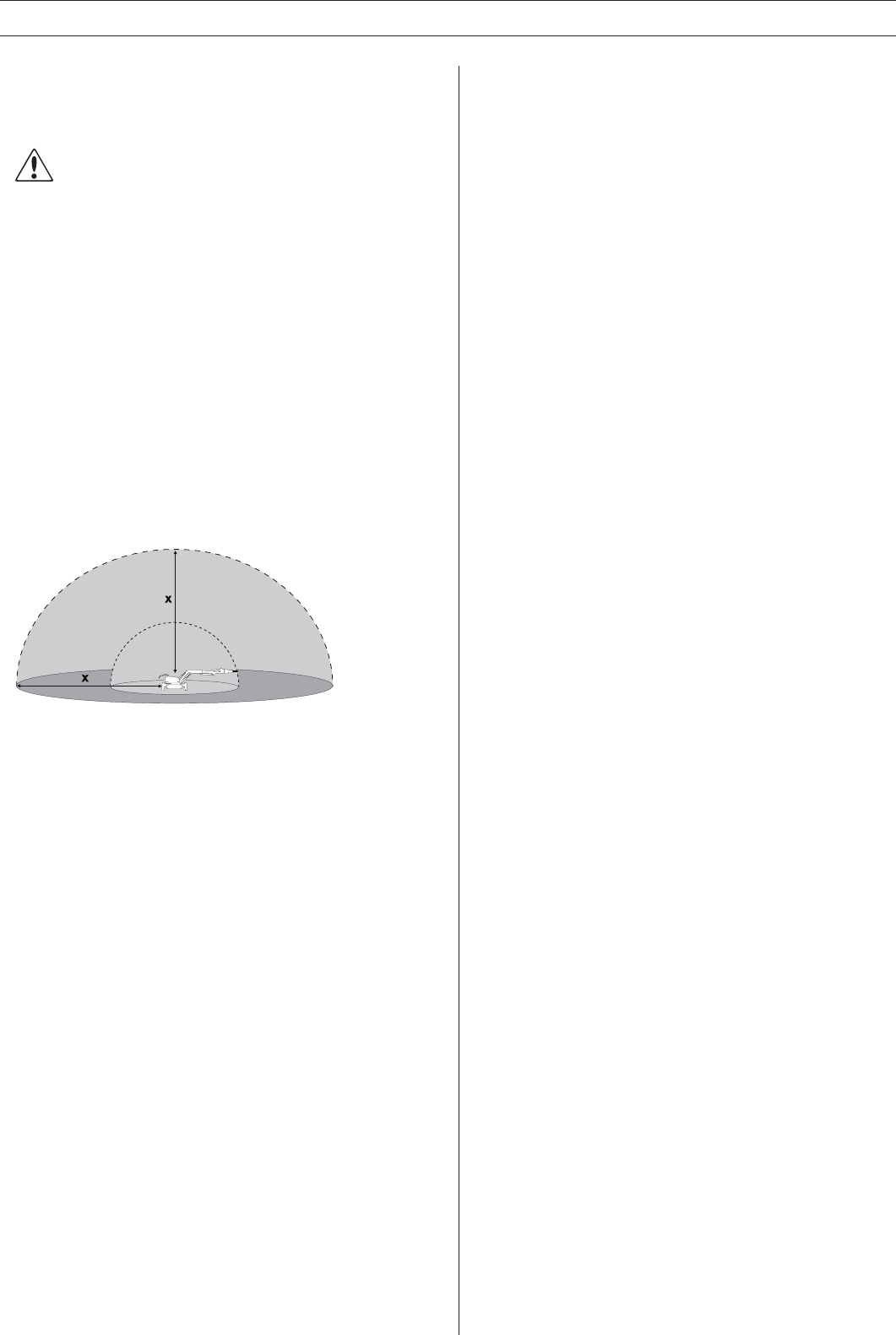
SAFETY INSTRUCTIONS
General working
instructions
WARNING!
Read all safety warnings and all instructions.
Neglecting to follow the warnings and instruc-
tions can lead to serious injury or death for the
operator or others..
This section describes basic safety directions for
using the machine. This information is never a substi-
tute for professional skills and experience. If you get
into a situation where you feel unsafe, stop and seek
expert advice. Contact your dealer, service agent or
an experienced user. Do not attempt any task that you
feel unsure of!
Work area safety
The machine’s risk area
Nobody is permitted to be within the machine’s risk
area when work is underway.
The working area is limited by the machine’s reach,
however, the risk area varies depending on working
method, work object, surface etc. Study possible risks
before starting work. If conditions change during the
course of the work, the risk area must be redefi ned.
Workplace
• Defi ne and cordon off the risk area. Nobody is per-
mitted to be within the machine’s risk area when
work is underway.
• Ensure that the working area is suffi ciently illumi-
nated to create a safe working environment.
• The machine can be remote controlled over long
distances. Do not operate the machine unless you
have clear supervision of the machine and its risk
area.
• Never start working with the machine until the
working area has been cleared of obstacles.
• Be on the alert when working in environments
where there is a substantial risk of slipping due to
unevenness, loose material, oil, ice or suchlike.
• Inspect ground conditions, load-bearing structures
etc. to prevent materials, machines and staff falling
and deal with any risks there might be before start-
ing work.
• When working at a height, for instance on roofs,
platforms and the like, increase the size of the risk
area. Defi ne and cordon off the risk area at ground
level and ensure that no material can fall down and
cause injury.
• Ensure when cutting that no material can become
loose and fall, causing operating injury. Take great
care when working on sloping ground.
• Do not use the machine in environments where
there is a risk of explosion. Take the risk of spark
formation into account when working in fl ammable
environments.
• Always check and mark where electricity cables
and pipelines are routed.
• The air in confi ned spaces can rapidly become
harmful to health due to, for example, dust and
gases. Use protective equipment and ensure that
there is satisfactory ventilation.
Electrical safety
• Check that the main voltage corresponds with the
machine’s rating plate.
• The machine must be connected to a functioning
protective earth.
• Check all cables and connections. Damaged
electric cables can impede the machine’s function
and lead to personal injuries. Do not use damaged
connectors or cables.
• The electric cabinet must not be opened when the
machine is connected to power. Some components
in the electric cabinet are permanently live, even if
the machine is turned off.
• Always connect the machine through an earth-fault
breaker with personal protection, i.e. an earth fault
circuit breaker that trips at an earth fault of 30 mA.
• The machine must never be driven to such a depth
in water that it reaches up to the machine’s equip-
ment. The equipment can be damaged and the
machine can be live, resulting in personal injuries.
• Ensure that the power cable cannot be run over.
Take particular care when moving or when the
outriggers are being retracted or extended. Risk of
electric shock.
• To avoid overheating do not use an electric cable
while it is coiled.
• Always de-energize the machine when carrying
out maintenance work and when it is not in use.
Disconnect the power cable and place it so that it
cannot be connected by mistake.
8 - English


















